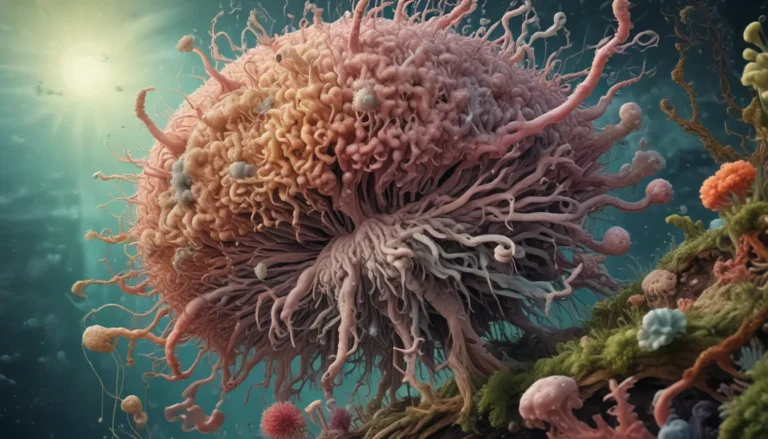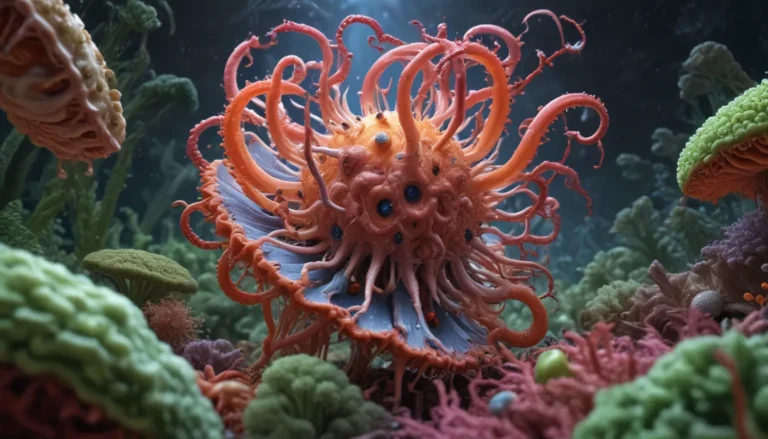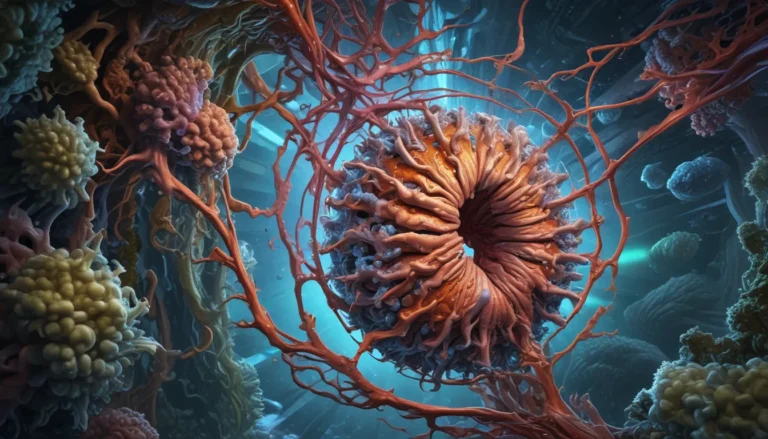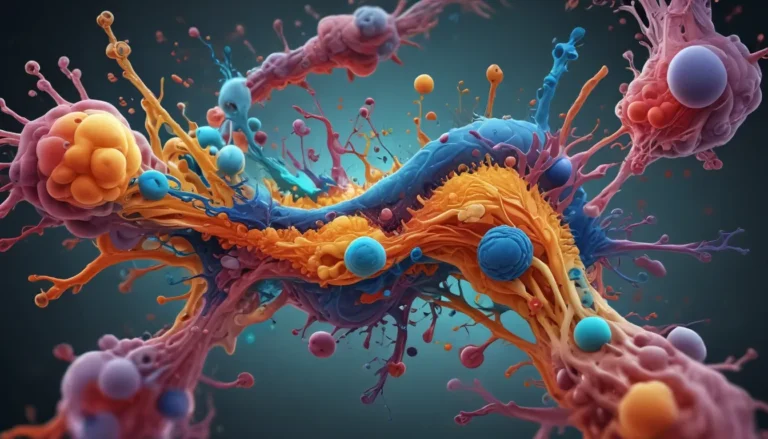A Note About Images: The images used in our articles are for illustration purposes only and may not exactly match the content. They are meant to engage readers, but the text should be relied upon for accurate information.
Energy flow in ecosystems is a captivating phenomenon that shapes the delicate equilibrium of life on Earth. The circulation of energy among various organisms, from primary producers to top predators, orchestrates the dynamics of the entire ecosystem. By understanding how energy traverses and transitions within these systems, we gain valuable insights into the intricate network of life that surrounds us.
Delving Into the Intriguing Facts about Energy Flow in Ecosystems
Let’s embark on a journey to explore fascinating facts about energy flow in ecosystems. From the pivotal role of photosynthesis in energy production to the intricate trophic levels and food chains, we will unravel the fundamental principles that govern the transfer of energy within and between species. Get ready to uncover the mysteries of energy flow and discover how it influences the structure, function, and stability of our diverse ecosystems.
Key Takeaways:
- Energy flow in ecosystems resembles a relay race, with plants capturing the sun’s energy and passing it on to herbivores, then to carnivores. Only 10% of the energy is transferred each time!
- Human activities and climate change have the potential to disrupt the delicate balance of energy flow in ecosystems, impacting the survival and stability of all organisms within the ecosystem.
Energy Flows Through the Food Chain
In ecosystems, energy undergoes a seamless transition from one organism to another through the food chain. Producers, such as plants, harness the sun’s energy via photosynthesis and convert it into chemical energy. This energy is subsequently passed on to herbivores, which are then consumed by carnivores, establishing a chain of energy flow.
Only a Fraction of Energy is Transferred
As energy moves through the food chain, only approximately 10% of the energy is transferred from one trophic level to the next. The remaining energy is dissipated as heat or utilized by the organism for various metabolic activities.
Decomposers Play a Crucial Role in Energy Flow
Decomposers, including bacteria and fungi, play a pivotal role in the energy cycle by breaking down organic matter and releasing nutrients back into the ecosystem. They are instrumental in recycling energy and maintaining the equilibrium of nutrients within the ecosystem.
Energy Flow Follows the Laws of Thermodynamics
The movement of energy in ecosystems adheres to the laws of thermodynamics. The first law stipulates that energy cannot be created or destroyed but can only be transformed from one form to another. Meanwhile, the second law dictates that energy is inevitably lost as heat during energy transfer.
The Sun is the Ultimate Source of Energy
All energy in ecosystems emanates from the sun. Through photosynthesis, plants convert solar energy into chemical energy, which is subsequently transmitted to other organisms within the ecosystem.
Energy Flow Influences Population Dynamics
The availability of energy in an ecosystem significantly impacts the population dynamics of various species. Inadequate energy can lead to population declines, while abundant energy can sustain larger populations.
Energy Flow Can be Disrupted by Human Activities
Human actions such as deforestation and pollution have the potential to disrupt energy flow in ecosystems. By altering habitats and degrading the environment, human activities can exert profound effects on the balance of energy flow and the overall well-being of ecosystems.
Energy Flow is Influenced by Trophic Levels
Organisms in ecosystems are categorized into trophic levels based on their position in the food chain. Primary producers occupy the first trophic level, followed by herbivores, carnivores, and so forth. Energy flow is highest at the producer level and diminishes as it ascends through the trophic levels.
Energy Flow can be Visualized through Ecological Pyramids
Ecological pyramids offer a visual representation of energy flow, biomass, or the number of organisms across trophic levels. In an energy pyramid, each level signifies the amount of energy present, with the greatest energy concentration at the producer level and decreasing energy levels as one progresses up the pyramid.
Energy Flow is Influenced by Energy Efficiency
Energy efficiency denotes the amount of energy transferred to the next trophic level. Greater energy efficiency typically occurs in shorter trophic transfers, such as when herbivores consume plants directly rather than through multiple intermediate carnivores.
Energy Flow Can be Disrupted by Invasive Species
Invasive species can disrupt energy flow in ecosystems by outcompeting native species for resources or preying on native organisms. This disruption can instigate cascading effects throughout the food web, altering energy transfer pathways.
Energy Flow is Essential for Ecosystem Stability
Energy flow is vital for upholding the stability and equilibrium of ecosystems. It ensures that energy perpetually cycles through different trophic levels, supporting the development and survival of organisms within the ecosystem.
Climate Change Can Impact Energy Flow
Climate change has the potential to affect energy flow in ecosystems through alterations in temperature, precipitation patterns, and habitat availability. These alterations can influence the distribution and productivity of species, thereby impacting energy flow dynamics.
Conclusion
Energy flow in ecosystems is a captivating and vital process that propels the functioning of all organisms within a given ecosystem. From producers that harness sunlight and convert it into chemical energy to consumers that depend on this energy for sustenance and growth, every organism contributes significantly to the flow of energy. Understanding the movement of energy through ecosystems is imperative for comprehending the delicate balance of nature and the repercussions of human activities on these complex systems.
By studying the dynamics of energy flow, scientists can garner invaluable insights into ecosystem stability, nutrient cycling, and the interdependencies among different species. This knowledge holds significant implications for conservation endeavors, sustainable resource management, and mitigating the impacts of climate change. As such, it is crucial that we continue to delve into and broaden our understanding of energy flow in ecosystems to make informed decisions aimed at preserving and safeguarding these invaluable habitats for future generations.
FAQs
Q: What is energy flow in ecosystems?
A: Energy flow in ecosystems pertains to the transfer of energy from one organism to another through feeding relationships, involving the conversion of sunlight into chemical energy by primary producers and its subsequent transmission to herbivores, carnivores, and decomposers.
Q: How does energy flow through the food chain?
A: Energy flows through the food chain in a unidirectional manner, commencing with plants capturing sunlight through photosynthesis. These plants are then consumed by herbivores, which are subsequently preyed upon by carnivores. Decomposers play a role in breaking down organic matter, releasing energy, and replenishing nutrients in the ecosystem.
Q: Why is energy flow important in ecosystems?
A: Energy flow is crucial in ecosystems as it dictates the availability of energy to support the growth, reproduction, and survival of organisms. Additionally, it influences the structure, diversity, and stability of ecosystems, providing insights into their functionality and the impacts of human activities.
Q: What happens to the energy as it moves through an ecosystem?
A: As energy traverses through an ecosystem, it is transferred from one trophic level to another. Nonetheless, energy is not entirely efficient in each transfer, with some energy being lost as heat during metabolic processes. This constrains the energy available to higher trophic levels.
Q: How does human activity impact energy flow in ecosystems?
A: Human activities can disrupt energy flow in ecosystems through habitat destruction, pollution, climate change, and the introduction of invasive species. These disruptions can upset the balance of energy flow, resulting in diminished biodiversity and ecosystem stability.
Unraveling the intricacies of energy flow in ecosystems marks just the inception of our captivating expedition into the marvels of nature. Delve deeper into the intricate relationships between organisms by exploring astounding facts about food chains. Discover the extraordinary potential of biomass and its role in sustaining life on Earth. Lastly, unveil the secrets of photosynthesis, the process that harnesses the sun’s energy to fuel the world around us. Each topic offers a distinctive viewpoint on the delicate balance and interconnectedness of our planet’s ecosystems, inviting you to continue your exploration of these enthralling subjects.
Was this page helpful?
Our pledge to deliver reliable and engaging content lies at the core of our mission. Every fact on our platform is contributed by real users like you, offering a wealth of diverse insights and information. To ensure the highest standards of accuracy and reliability, our dedicated editors meticulously scrutinize each submission. This meticulous review process ensures that the facts we share are not only captivating but also credible. Rest assured in our commitment to quality and authenticity as you embark on a journey of exploration and learning with us.






